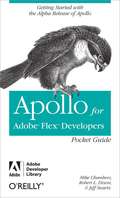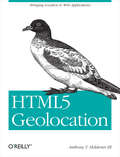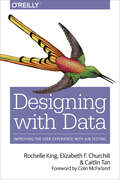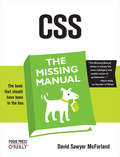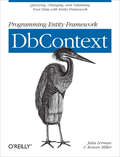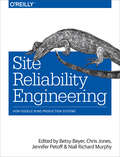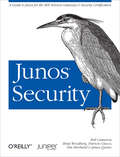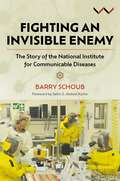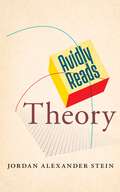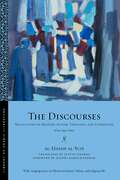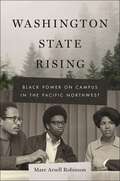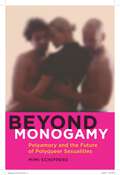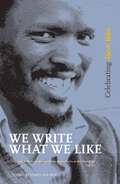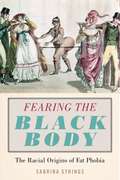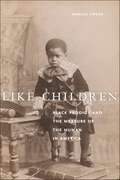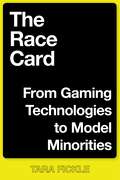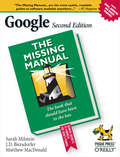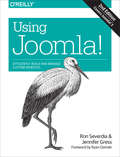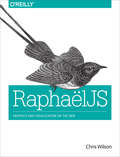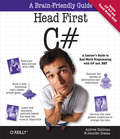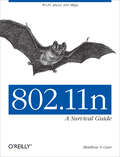- Table View
- List View
Apollo for Adobe Flex Developers Pocket Guide: A Developer's Reference for Apollo's Alpha Release (Pocket Reference (O'Reilly))
by Mike Chambers Rob Dixon Jeff SwartzWritten by members of the Apollo product team, this is the official guide to the Alpha release of Adobe Apollo, the new cross platform desktop runtime from Adobe Labs.Apollo for Adobe Flex Developers Pocket Guide explains how to build and deploy Flash-based Rich Internet Applications (RIAs) to the desktop using Adobe's Flex framework. This book describes concisely how Apollo works, and offers numerous examples for those who want to start building RIAs for the desktop right away.Why put RIAs on the desktop? They're already supposed to offer the responsiveness of desktop programs. Unfortunately, web browsers were designed to deliver and display HTML-based documents, not applications. The conflict between document- and application-focused functionality creates several problems when deploying applications via the browser.Adobe Apollo gives you the best of both worlds -- the web development model and true desktop functionality. This pocket guide explains how to:Set up your development environmentCreate your first applicationUse the File I/O APIUse HTML within Flex-based Apollo applicationsUse the included Apollo mini-cookbook for common tasksThe book also includes a guide to Apollo packages, classes, and command-line tools. Once you understand the basics of building a Flex-based Apollo application, this pocket guide makes an ideal reference for tackling specific problems.Adobe Developer Library is a co-publishing partnership between O'Reilly Media and Adobe Systems, Inc. and is designed to produce the number one information resources for developers who use Adobe technologies. Created in 2006, the Adobe Developer Library is the official source for comprehensive learning solutions to help developers create expressive and interactive web applications that can reach virtually anyone on any platform. With top-notch books and innovative online resources covering the latest in rich Internet application development, the Adobe Developer Library offers expert training and in-depth resources, straight from the source.
C in a Nutshell: The Definitive Reference
by Peter Prinz Tony CrawfordThe new edition of this classic O’Reilly reference provides clear, detailed explanations of every feature in the C language and runtime library, including multithreading, type-generic macros, and library functions that are new in the 2011 C standard (C11). If you want to understand the effects of an unfamiliar function, and how the standard library requires it to behave, you’ll find it here, along with a typical example.Ideal for experienced C and C++ programmers, this book also includes popular tools in the GNU software collection. You’ll learn how to build C programs with GNU Make, compile executable programs from C source code, and test and debug your programs with the GNU debugger.In three sections, this authoritative book covers:C language concepts and language elements, with separate chapters on types, statements, pointers, memory management, I/O, and moreThe C standard library, including an overview of standard headers and a detailed function referenceBasic C programming tools in the GNU software collection, with instructions on how use them with the Eclipse IDE
HTML5 Geolocation: Bringing Location to Web Applications (Oreilly And Associate Ser.)
by Anthony T. Holdener IIITruly revolutionary: now you can write geolocation applications directly in the browser, rather than develop native apps for particular devices. This concise book demonstrates the W3C Geolocation API in action, with code and examples to help you build HTML5 apps using the "write once, deploy everywhere" model. Along the way, you get a crash course in geolocation, browser support, and ways to integrate the API with common geo tools like Google Maps. Ideal for experienced JavaScript developers.Learn how geo information is gathered from different sources, depending on the deviceDiscover how coordinate systems work, including geodetic systems and datumsUse the API to collect location information from a user’s browser with JavaScript codePlace geo information on a map using the Google Maps or ArcGIS JavaScript APIsSave geo data with databases, the Keyhole Markup Language, or the shapefile formatBe familiar with several practical uses for geo data, such as geomarketing, geosocial, geotagging, and geo-applications
Designing with Data: Improving the User Experience with A/B Testing
by Caitlin Tan Elizabeth F Churchill Rochelle KingOn the surface, design practices and data science may not seem like obvious partners. But these disciplines actually work toward the same goal, helping designers and product managers understand users so they can craft elegant digital experiences. While data can enhance design, design can bring deeper meaning to data.This practical guide shows you how to conduct data-driven A/B testing for making design decisions on everything from small tweaks to large-scale UX concepts. Complete with real-world examples, this book shows you how to make data-driven design part of your product design workflow.Understand the relationship between data, business, and designGet a firm grounding in data, data types, and components of A/B testingUse an experimentation framework to define opportunities, formulate hypotheses, and test different optionsCreate hypotheses that connect to key metrics and business goalsDesign proposed solutions for hypotheses that are most promisingInterpret the results of an A/B test and determine your next move
CSS: The Missing Manual
by David Sawyer McFarlandWeb site design has grown up. Unlike the old days, when designers cobbled togetherchunky HTML, bandwidth-hogging graphics, and a prayer to make their sites look good,Cascading Style Sheets (CSS) now lets your inner designer come out and play. But CSSisn't just a tool to pretty up your site; it's a reliable method for handling allkinds of presentation--from fonts and colors to page layout. CSS: The MissingManual clearly explains this powerful design language and how you can use it tobuild sparklingly new Web sites or refurbish old sites that are ready for an upgrade.Like their counterparts in print page-layout programs, style sheets allowdesigners to apply typographic styles, graphic enhancements, and precise layoutinstructions to elements on a Web page. Unfortunately, due to CSS's complexity andthe many challenges of building pages that work in all Web browsers, most Web authorstreat CSS as a kind of window-dressing to spruce up the appearance of their sites.Integrating CSS with a site's underlying HTML is hard work, and often frustratinglycomplicated. As a result many of the most powerful features of CSS are left untapped.With this book, beginners and Web-building veterans alike can learn how to navigatethe ins-and-outs of CSS and take complete control over their Web pages'appearance.Author David McFarland (the bestselling author of O'Reilly's Dreamweaver: TheMissing Manual) combines crystal-clear explanations, real-world examples, a dashof humor, and dozens of step-by-step tutorials to show you ways to design sites withCSS that work consistently across browsers. You'll learn how to:Create HTML that's simpler, uses less code, is search-engine friendly, andworks well with CSSStyle text by changing fonts, colors, font sizes, and adding bordersTurn simple HTML links into complex and attractive navigation bars-completewith CSS-only rollover effects that add interactivity to your Web pagesStyle images to create effective photo galleries and special effects likeCSS-based drop shadowsMake HTML forms look great without a lot of messy HTMLOvercome the most hair-pulling browser bugs so your Web pages work consistentlyfrom browser to browserCreate complex layouts using CSS, including multi-column designs that don'trequire using old techniques like HTML tablesStyle Web pages for printingUnlike competing books, this Missing Manual doesn't assume that everyone in theworld only surfs the Web with Microsoft's Internet Explorer; our book providessupport for all major Web browsers and is one of the first books to thoroughlydocument the newly expanded CSS support in IE7, currently in beta release.Want to learn how to turn humdrum Web sites into destinations that will captureviewers and keep them longer? Pick up CSS: The Missing Manual and learn thereal magic of this tool.
Programming Entity Framework: Querying, Changing, and Validating Your Data with Entity Framework (Oreilly And Associate Ser.)
by Julia Lerman Rowan MillerThe DbContext API captures Entity Framework’s (EF) most commonly used features and tasks, simplifying development with EF. This concise book shows you how to use the API to perform set operations with the DbSet class, handle change tracking and resolve concurrency conflicts with the Change Tracker API, and validate changes to your data with the Validation API.With DbContext, you’ll be able to query and update data, whether you’re working with individual objects or graphs of objects and their related data. You’ll find numerous C# code samples to help you get started. All you need is experience with Visual Studio and database management basics.Use EF’s query capabilities to retrieve data, and use LINQ to sort and filter dataLearn how to add new data, and change and delete existing dataUse the Change Tracker API to access information EF keeps about the state of entity instancesControl change tracking information of entities in disconnected scenarios, including NTier applicationsValidate data changes before they’re sent to the database, and set up validation rulesBypass EF’s query pipeline and interact directly with the database
Site Reliability Engineering: How Google Runs Production Systems
by Chris Jones Niall Richard Murphy Betsy Beyer Jennifer PetoffThe overwhelming majority of a software systemâ??s lifespan is spent in use, not in design or implementation. So, why does conventional wisdom insist that software engineers focus primarily on the design and development of large-scale computing systems?In this collection of essays and articles, key members of Googleâ??s Site Reliability Team explain how and why their commitment to the entire lifecycle has enabled the company to successfully build, deploy, monitor, and maintain some of the largest software systems in the world. Youâ??ll learn the principles and practices that enable Google engineers to make systems more scalable, reliable, and efficientâ??lessons directly applicable to your organization.This book is divided into four sections:Introductionâ??Learn what site reliability engineering is and why it differs from conventional IT industry practicesPrinciplesâ??Examine the patterns, behaviors, and areas of concern that influence the work of a site reliability engineer (SRE)Practicesâ??Understand the theory and practice of an SREâ??s day-to-day work: building and operating large distributed computing systemsManagementâ??Explore Google's best practices for training, communication, and meetings that your organization can use
Programming 3D Applications with HTML5 and WebGL: 3D Animation and Visualization for Web Pages
by Tony ParisiCreate high-performance, visually stunning 3D applications for the Web, using HTML5 and related technologies such as CSS3 and WebGL—the emerging web graphics standard. With this book, you’ll learn how to use the tools, frameworks, and libraries for building 3D models and animations, mind-blowing visual effects, and advanced user interaction in both desktop and mobile browsers.In two parts—Foundations and Application Development Techniques—author Tony Parisi provides a thorough grounding in theory and practice for designing everything from a simple 3D product viewer to immersive games and interactive training systems. Ideal for developers with Javascript and HTML experience.Explore HTML5 APIs and related technologies for creating 3D web graphics, including WebGL, Canvas, and CSSWork with the popular JavaScript 3D rendering and animation libraries Three.js and Tween.jsDelve into the 3D content creation pipeline, and the modeling and animation tools for creating killer 3D contentLook into several game engines and frameworks for building 3D applications, including the author’s Vizi frameworkCreate 3D environments with multiple objects and complex interaction, using examples and supporting codeExamine the issues involved in building WebGL-based 3D applications for mobile browsers
Junos Security: A Guide to Junos for the SRX Services Gateways and Security Certification
by Rob Cameron Brad Woodberg Patricio Giecco Timothy Eberhard James QuinnJunos® Security is the complete and authorized introduction to the new Juniper Networks SRX hardware series. This book not only provides a practical, hands-on field guide to deploying, configuring, and operating SRX, it also serves as a reference to help you prepare for any of the Junos Security Certification examinations offered by Juniper Networks.Network administrators and security professionals will learn how to use SRX Junos services gateways to address an array of enterprise data network requirements -- including IP routing, intrusion detection, attack mitigation, unified threat management, and WAN acceleration. Junos Security is a clear and detailed roadmap to the SRX platform. The author's newer book, Juniper SRX Series, covers the SRX devices themselves.Get up to speed on Juniper’s multi-function SRX platforms and SRX Junos softwareExplore case studies and troubleshooting tips from engineers with extensive SRX experienceBecome familiar with SRX security policy, Network Address Translation, and IPSec VPN configurationLearn about routing fundamentals and high availability with SRX platformsDiscover what sets SRX apart from typical firewallsUnderstand the operating system that spans the entire Juniper Networks networking hardware portfolioLearn about the more commonly deployed branch series SRX as well as the large Data Center SRX firewalls"I know these authors well. They are out there in the field applying the SRX's industry-leading network security to real world customers everyday. You could not learn from a more talented team of security engineers."--Mark Bauhaus, EVP and General Manager, Juniper Networks
Fighting an Invisible Enemy: The Story of the National Institute for Communicable Diseases
by Barry SchoubFighting an Invisible Enemy narrates the founding in 2002 and growth of the internationally renowned centre of excellence for communicable diseases, the National Institute for Communicable Diseases (NICD) in South Africa. In a continent riven with a panoply of formidable contagious pathogens, the book describes how the nascent NICD travelled a rocky road to maturity. Starting humbly, as did many of its sister public health institutions around the world, the road was strewn with daunting obstacles of financial restrictions, bureaucratic straitjacketing, international isolation during the apartheid era and, in later years, the calumny of governmental AIDS denial. Following the triumph of the eradication of the once-dreaded smallpox, the NICD now plays a crucial role in the global effort to eradicate poliomyelitis. While the country has the misfortune of the largest HIV/AIDS pandemic in the world, the Institute’s HIV research unit has become a world leader. More remote from public notice are the laboratories and support epidemiologists carry out for ongoing surveillance of communicable diseases and the alerts they provide for any signal of an impending outbreak or pandemic. The Institute’s value to public health was clearly shown in the recent Covid-19 pandemic. The maxim that we are only safe when everyone everywhere is safe, underlines the importance of international partnerships and the key role the NICD plays, not only for the country but also for global health. This is a flagship organisation in public health in South Africa and this book paints a vivid portrait of its incredible accomplishments.
Avidly Reads Theory
by Jordan Alexander Stein“Theory offered us a way of understanding the world that, like so many youthful exuberances, was both vital and ridiculous.”As an avowed “theory head,” Jordan Alexander Stein confronts a contradiction: that the abstract, and often frustrating rigors of theory also produced a sense of pride and identity for him and his friends: an idea of how to be and a way to live. Although Stein explains what theory is, this is not an introduction or a how-to. Organized around five ways that theory makes us feel—silly, stupid, sexy, seething and stuck—Stein travels back to the late nineties to tell a story of coming of age at a particular moment and to measure how that moment lives on now.Avidly Reads is a series of short books about how culture makes us feel. Founded in 2012 by Sarah Blackwood and Sarah Mesle, Avidly—an online magazine supported by the Los Angeles Review of Books—specializes in short-form critical essays devoted to thinking and feeling. Avidly Reads is an exciting new series featuring books that are part memoir, part cultural criticism, each bringing to life the author’s emotional relationship to a cultural artifact or experience. Avidly Reads invites us to explore the surprising pleasures and obstacles of everyday life. This is a story about the emotional lives of ideas.
The Discourses: Reflections on History, Sufism, Theology, and Literature—Volume One (Library of Arabic Literature)
by al-Ḥasan al-YūsīWide-ranging essays on Moroccan history, Sufism, and religious life Al-Ḥasan al-Yūsī was arguably the most influential and well-known Moroccan intellectual figure of his generation. In 1084/1685, at the age of roughly fifty-four, and after a long and distinguished career, this Amazigh scholar from the Middle Atlas began writing a collection of short essays on a wide variety of subjects. Completed three years later and gathered together under the title Discourses on Language and Literature (al-Muhadarat fi l-adab wa-l-lughah), they offer rich insight into the varied intellectual interests of an ambitious and gifted Moroccan scholar, covering subjects as diverse as genealogy, theology, Sufism, history, and social mores. In addition to representing the author’s intellectual interests, The Discourses also includes numerous autobiographical anecdotes, which offer valuable insight into the history of Morocco, including the transition from the Saadian to the Alaouite dynasty, which occurred during al-Yūsī’s lifetime. Translated into English for the first time, The Discourses offers readers access to the intellectual landscape of the early modern Muslim world through an author who speaks openly and frankly about his personal life and his relationships with his country’s rulers, scholars, and commoners.An English-only edition.
Washington State Rising: Black Power on Campus in the Pacific Northwest (Black Power #3)
by Marc Arsell RobinsonDocuments the origins, actions, and impacts of the Black Student Union in the state of Washington during the tumultuous late 1960s.Washington State Rising documents the origins, actions, and impact of the Black Student Union (BSU) in Washington from 1967 to 1970. The BSU was a politicized student organization that had chapters across the West Coast and played a prominent role in the student wing of the Black Power Movement. Through accounts of Black student struggles at two different college campuses in Washington, one urban and one rural, Marc Arsell Robinson details how the BSU led highly consequential protest campaigns at both institutions and beyond, which led to reforms such as the establishment of Black Studies programs, increased hiring of Black faculty and staff, and new initiatives to recruit and retain students of color.Washington State Rising is the first book to document 1960s Black student activism in the Pacific Northwest and includes extensive oral history interviews with former BSU members. Robinson uncovers new insights into Black politics, locating the Black Power Movement in Seattle, Washington, a city and state not typically associated with 1960s black protest. At once fascinating and revelatory, Washington State Rising provides historical insights for current and future social justice activism.
Beyond Monogamy: Polyamory and the Future of Polyqueer Sexualities (Intersections #13)
by Mimi SchippersA man and woman are in an open relationship. They have agreed that having sexual partners outside of their relationship is permissible. One night, when her partner is in another city, the woman has sex with the man’s best friend. What does this mean for their relationship? More importantly, why is there such a strong cultural taboo against this kind of triangulation and what does it reveal about the social organization of gender and sexuality? In Beyond Monogamy, Mimi Schippers asks these and other questions to explore compulsory monogamy as a central feature of sexual normalcy. Schippers argues that compulsory monogamy promotes the monogamous couple as the only legitimate, natural, or desirable relationship form in ways that support and legitimize gender, race, and sexual inequalities. Through an investigation of sexual interactions and relationship forms that include more than two people, from polyamory, to threesomes, to the complexity of the ‘down-low,’ Schippers explores the queer, feminist, and anti-racist potential of non-dyadic sex and relationships. A serious look at the intersections of society and sexuality, Beyond Monogamy takes the reader on a compelling and accessible journey through compulsory monogamy, polyamory, and polyqueer sex and relationships.
We Write What We Like: Celebrating Steve Biko (Columbia/hurst Ser.)
by Chris Van WykA celebration of Steve Biko's legacy of freedomSteve Biko, the founder of the Black Consciousness philosophy, was killed in prison on 12 September 1977. Biko was only thirty years old, but his ideas and political activities changed the course of South African history and helped hasten the end of apartheid. The year 2007 saw the thirtieth anniversary of Biko's death. To mark the occasion, the then Minister of Science and Technology, Dr Mosibudi Mangena, commissioned Chris van Wyk to compile an anthology of essays as a tribute to the great South African son. Among the contributors are Minister Mangena himself, ex-President Thabo Mbeki, writer Darryl Accone, journalists Lizeka Mda and Bokwe Mafuna, academics Jonathan Jansen, Mandla Seleoane and Saths Cooper, a friend of Biko's and former president of Azapo. We Write What We Like proudly echoes the title of Biko's seminal work, I Write What I Like. It is a gift to a new generation which enjoys freedom, from one that was there when this freedom was being fought for. And it celebrates the man whose legacy is the freedom to think and say and write what we like.
Fearing the Black Body: The Racial Origins of Fat Phobia
by Sabrina StringsWinner, 2020 Body and Embodiment Best Publication Award, given by the American Sociological AssociationHonorable Mention, 2020 Sociology of Sex and Gender Distinguished Book Award, given by the American Sociological AssociationHow the female body has been racialized for over two hundred years There is an obesity epidemic in this country and poor black women are particularly stigmatized as “diseased” and a burden on the public health care system. This is only the most recent incarnation of the fear of fat black women, which Sabrina Strings shows took root more than two hundred years ago.Strings weaves together an eye-opening historical narrative ranging from the Renaissance to the current moment, analyzing important works of art, newspaper and magazine articles, and scientific literature and medical journals—where fat bodies were once praised—showing that fat phobia, as it relates to black women, did not originate with medical findings, but with the Enlightenment era belief that fatness was evidence of “savagery” and racial inferiority. The author argues that the contemporary ideal of slenderness is, at its very core, racialized and racist. Indeed, it was not until the early twentieth century, when racialized attitudes against fatness were already entrenched in the culture, that the medical establishment began its crusade against obesity. An important and original work, Fearing the Black Body argues convincingly that fat phobia isn’t about health at all, but rather a means of using the body to validate race, class, and gender prejudice.
Muhammad in the Seminary: Protestant Teaching about Islam in the Nineteenth Century
by David D. GraftonUncovers what Christian seminaries taught about Islam in their formative yearsThroughout the nineteenth century, Islam appeared regularly in the curricula of American Protestant seminaries. Islam was not only the focus of Christian missions, but was studied as part of the history of the Church as well as in the new field of comparative religions. Moreover, Arabic was taught as a cognate biblical language to help students better understand biblical Hebrew. Passages from the Qur’an were sometimes read as part of language instruction.Christian seminaries were themselves new institutions in the nineteenth century. Though Islam had already been present in the Americas since the beginning of the slave trade, it was only in the nineteenth century that the American public became more aware of Islam and had increasing contact with Muslims. It was during this period that extensive trade with the Ottoman empire emerged and more feasible travel opportunities to the Middle East became available due to the development of the steamship. Providing an in-depth look at the information about Islam that was available in seminaries throughout the nineteenth century, Muhammad in the Seminary examines what Protestant seminaries were teaching about this tradition in the formative years of pastoral education. In charting how American Christian leaders’ ideas about Islam were shaped by their seminary experiences, this volume offers new insight into American religious history and the study of Christian-Muslim relations.
Like Children: Black Prodigy and the Measure of the Human in America (Performance and American Cultures)
by Camille OwensA new history of manhood, race, and hierarchy in American childhoodLike Children argues that the child has been the key figure giving measure and meaning to the human in thought and culture since the early American period. Camille Owens demonstrates that white men’s power at the top of humanism’s order has depended on those at the bottom. As Owens shows, it was childhood’s modern arc—from ignorance and dependence to reason and rights—that structured white men’s power in early America: by claiming that black adults were like children, whites naturalized black subjection within the American family order. Demonstrating how Americans sharpened the child into a powerful white supremacist weapon, Owens nevertheless troubles the notion that either the child or the human have been figures of unadulterated whiteness or possess stable boundaries.Like Children recenters the history of American childhood around black children and rewrites the story of the human through their acts. Through the stories of black and disabled children spectacularized as prodigies, Owens tracks enduring white investment in black children’s power and value, and a pattern of black children performing beyond white containment. She reconstructs the extraordinary interventions and inventions of figures such as the early American poet Phillis Wheatley, the nineteenth-century pianist Tom Wiggins (Blind Tom), a child known as “Bright” Oscar Moore, and the early-twentieth century “Harlem Prodigy,” Philippa Schuyler, situating each against the racial, gendered, and developmental rubrics by which they were designated prodigious exceptions. Ultimately, Like Children displaces frames of exclusion and dehumanization to explain black children’s historical and present predicament, revealing the immense cultural significance that black children have negotiated and what they have done to reshape the human in their own acts.
The Race Card: From Gaming Technologies to Model Minorities (Postmillennial Pop #22)
by Tara FickleWinner, 2020 American Book Award, given by the Before Columbus FoundationHow games have been used to establish and combat Asian American racial stereotypes As Pokémon Go reshaped our neighborhood geographies and the human flows of our cities, mapping the virtual onto lived realities, so too has gaming and game theory played a role in our contemporary understanding of race and racial formation in the United States. From the Chinese Exclusion Act and Japanese American internment to the model minority myth and the globalization of Asian labor, Tara Fickle shows how games and game theory shaped fictions of race upon which the nation relies. Drawing from a wide range of literary and critical texts, analog and digital games, journalistic accounts, marketing campaigns, and archival material, Fickle illuminates the ways Asian Americans have had to fit the roles, play the game, and follow the rules to be seen as valuable in the US. Exploring key moments in the formation of modern US race relations, The Race Card charts a new course in gaming scholarship by reorienting our focus away from games as vehicles for empowerment that allow people to inhabit new identities, and toward the ways that games are used as instruments of soft power to advance top-down political agendas. Bridging the intellectual divide between the embedded mechanics of video games and more theoretical approaches to gaming rhetoric, Tara Fickle reveals how this intersection allows us to overlook the predominance of game tropes in national culture. The Race Card reveals this relationship as one of deep ideological and historical intimacy: how the games we play have seeped into every aspect of our lives in both monotonous and malevolent ways.
Google: The Missing Manual (Google: The Missing Manual)
by Rael Dornfest J. D. Biersdorfer Sarah Milstein Matthew MacDonaldGoogle.com is one of the most popular sites on the Internet and is used around the world by millions of people every day. Sure, you know how to "Google it" when you're searching for something--anything!--on the Web. It's plenty fast and easy to use. But did you know how much more you could achieve with the world's best search engine by clicking beyond the "Google Search" button?While you can interface with Google in 97 languages and glean results in 35, you can't find any kind of instruction manual from Google. Lucky for you, our fully updated and greatly expanded second edition to the bestselling Google: The Missing Manual covers everything you could possibly want to know about Google, including the newest and coolest--and often most underused (what is Froogle, anyway?)--features. There's even a full chapter devoted to Gmail, Google's free email service that includes a whopping 2.5 GB of space).This wise and witty guide delivers the complete scoop on Google, from how it works to how you can search far more effectively and efficiently (no more scrolling through 168 pages of seemingly irrelevant results); take best advantage of Google's lesser-known features, such as Google Print, Google Desktop, and Google Suggest; get your website listed on Google; track your visitors with Google Analytics; make money with AdWords and AdSense; and much more.Whether you're new to Google or already a many-times-a-day user, you're sure to find tutorials, tips, tricks, and tools that take you well beyond simple search to Google gurudom.
Using Joomla!: Efficiently Build and Manage Custom Websites
by Ron Severdia Jennifer GressIf you’re new to content management systems—or even new to building websites—this practical guide will get you up and running in no time. You don’t have to know much code, if any, to get started.Need to build a website quickly? Have a client that requires a powerful website with lots of compelling features? Ideal for web designers and developers alike, this updated edition takes you step-by-step through site creation with Joomla, with plenty of hands-on exercises along the way.Build a sample site throughout the book to see how Joomla! worksPlan and structure your site’s categories, articles, menus, and modulesLearn the ins and outs of creating, organizing, and displaying contentAdd images, audio, and video—and create complete image galleriesBuild a blog, set up an events calendar, and create custom user formsSell merchandise by putting together your own online storeEngage visitors by creating user profiles and hangoutsSecure your site and keep it optimizedMigrate to Joomla! 3 and update your third-party extensions
RaphaelJS: Graphics and Visualization on the Web
by Chris WilsonCreate beautiful, interactive images on the Web with RaphaëlJS, the JavaScript library that lets you draw Scalable Vector Graphics (SVG) right in the browser. With this concise guide, you’ll quickly learn how to paint the screen with shapes and colors that you can turn into lively, animated graphics and visualizations.Author Chris Wilson (Time.com) shows you how to create Raphaël objects and manipulate them with animation, transformations, and other techniques, using just a few lines of code. Packed with working examples, sample code, and cool hands-on projects, RaphaëlJS is ideal for new and experienced JavaScript programmers alike.Create images that work on browsers new and old, as well as mobile devicesStart with the basics—shapes, colors, transformations, sets, and textLearn how to build custom curves and shapes with pathsCode animations that move through space, follow paths, or change directionMake your artwork come alive through user interactionBind a dataset to a collection of visual objects—the basis of data visualizationLearn techniques to make your detailed visuals stand out on screens of any size
MediaWiki: Wikipedia and Beyond (Wikipedia and Beyond)
by Daniel J. Barrett"A good book! It's a nice overview of wiki editing and administration, with pointers to handy extensions and further online documentation."-Brion Vibber, Chief Technical Officer, Wikimedia Foundation "This book is filled with practical knowledge based on experience. It's not just spouting some party line."-Rob Church, a developer of MediaWikiMediaWiki is the world's most popular wiki platform, the software that runs Wikipedia and thousands of other websites. Though it appears simple to use at first glance, MediaWiki has extraordinarily powerful and deep capabilities for managing and organizing knowledge. In corporate environments, MediaWiki can transform the way teams write and collaborate.This comprehensive book covers MediaWiki's rich (and sometimes subtle) features, helping you become a wiki expert in no time. You'll learn how to:Find your way around by effective searching and browsingCreate and edit articles, categories, and user preferencesUse advanced features for authors, such as templates, dynamic lists, logical parser functions, and RSS, to organize and maintain large numbers of articlesInstall and run your own wiki, and configure its look and behaviorDevelop custom wiki features, called extensions, with the PHP programming language and MySQL databaseThis book also provides special guidance for creating successful corporate wikis. For beginners who want to create or work on collaborative, community-driven websites with this platform, MediaWiki is the essential one-stop guide."I was a MediaWiki newbie before reading this book. Now, many aspects of the platform that were murky before are crystal clear."-JP Vossen, author of O'Reilly's Bash Cookbook
Head First C# (Head First)
by Jennifer Greene Andrew StellmanHead First C# is a complete learning experience for object-oriented programming, C#, and the Visual Studio IDE. Built for your brain, this book covers C# 3.0 and Visual Studio 2008, and teaches everything from language fundamentals to advanced topics including garbage collection, extension methods, and double-buffered animation. You'll also master C#'s hottest and newest syntax, LINQ, for querying SQL databases, .NET collections, and XML documents. By the time you're through, you'll be a proficient C# programmer, designing and coding large-scale applications.Every few chapters you will come across a lab that lets you apply what you've learned up to that point. Each lab is designed to simulate a professional programming task, increasing in complexity until-at last-you build a working Invaders game, complete with shooting ships, aliens descending while firing, and an animated death sequence for unlucky starfighters. This remarkably engaging book will have you going from zero to 60 with C# in no time flat.
802.11n: Wi-Fi Above 100 Mbps
by Matthew S. GastWireless has finally come of age. With a significant jump in throughput over previous standards, 802.11n is the first wireless technology that doesn’t trade speed for mobility, and users have stormed onto wireless networks with a passion. In this concise guide, Matthew Gast—chair of the IEEE group that produced revision 802.11-2012—shows you why wireless has become the default method of connecting to a network, and provides technical details you need to plan, design, and deploy 802.11n today.Building a network for the multitude of new devices is now a strategic decision for network engineers everywhere. This book gives you an in-depth look at key parts of 802.11n, and shows you how to achieve an Ethernet-free wireless office.Learn how MIMO’s multiple data streams greatly increase wireless speedDiscover how 802.11n modifications improve MAC efficiencyExamine advanced PHY features such as beanforming and space-time code blockUse advanced MAC features to maintain interoperability with older devicesPlan an 802.11n network by determining traffic demand, key applications, power requirements, and securityChoose the architecture, select hardware, and plan coverage to design and build your network
